Ficus elastic or rubbery is a popular houseplant from the vast Mulberry family. The countries of Asia and Africa are considered his homeland. In the wild, the plant also grows on the island of Java.
Material Content:
Types, varieties and nuances of growing
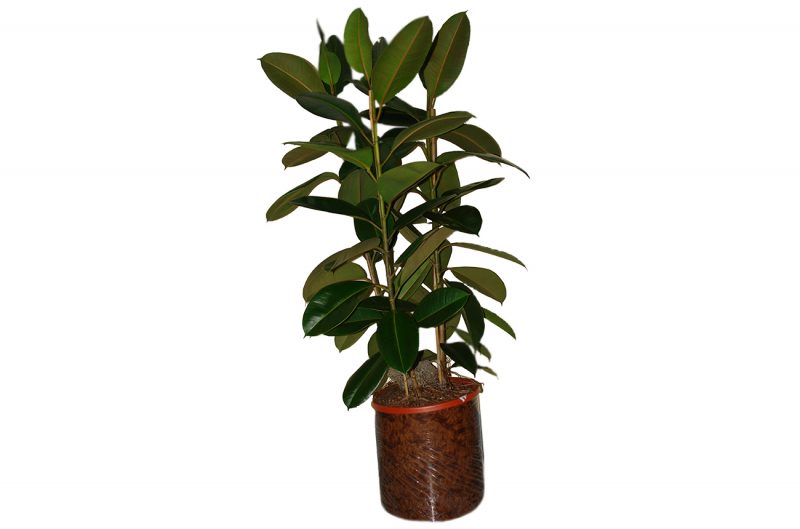
In indoor conditions, the flower will not reach such impressive sizes as in the wild, but will grow slowly over the years, while looking very attractive. Blossoming of ficuses cannot be called decorative - the main value of the plant is in foliage. Indoor grow only a few types of ficus, the care of which is very simple.
Melanie

This variety is ideal for growing in a small room - the bush grows compact and decorative. Melanie's leaves are dark green with a beautiful pink bottom. Melanie looks very unusual, as the plant is very bushy.
This ficus is extremely unpretentious, and is suitable for those gardeners who are sorely lacking time to care for plants.
Abidjan

Abidjan boasts very wide leaves with decorative burgundy streaks. Not suitable for small rooms, as the bush grows very bulky. Abidjan is unpretentious and can easily become the very first plant in the collection of a beginner grower.
Robusta

Ficus elastica Robusta, perhaps the most demanding in care. The leaves of this variety are dark green, very dense, fleshy, qualitatively filter the air in the room.
Belize
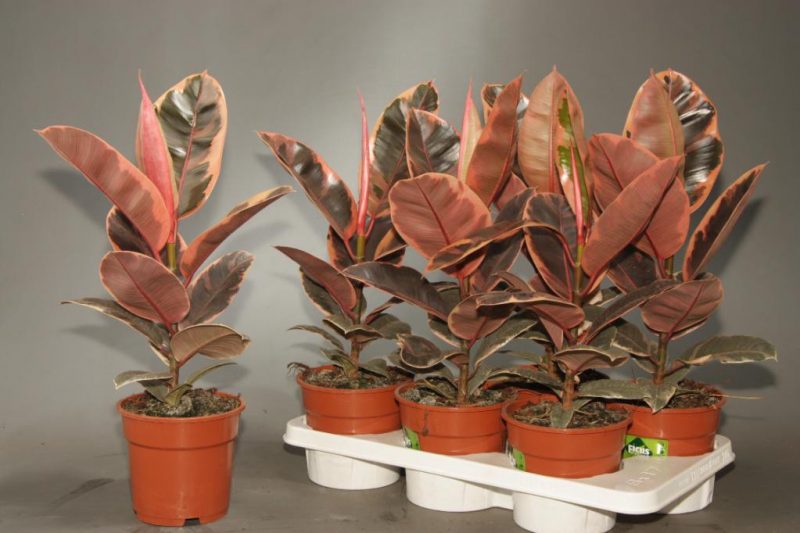
Elasticity Belize is most common in indoor floriculture.The color of the leaves of Belize is three-colored, which distinguishes it from the rest of the varieties.
The edge of the leaf in Belize is pink, and the center is green. The variety needs bright lighting and it needs a lot of painstaking care.
Mix
Ficus elastic Mix grows if several varieties of rubber ficus are planted in one pot at once. It turns out a very decorative bush Mix with foliage of different colors and shapes.
As soon as a new plant enters the house after purchase, it is necessary to quarantine it. So it is checked whether the flower is sick and if there are no pests on it. Immediately after quarantine, ficus needs to be transplanted.
Home Care
For many varieties of indoor ficus, care can be called not burdensome. But nevertheless, some rules should be followed, as well as create suitable conditions for the flower for proper growth and development.
Read also: pedilanthus care at home
Temperature features, lighting, humidity
In spring and summer, ficus is very good at a temperature of about +25. This flower can also endure the summer heat with virtually no damage, but only if it does not last too long.
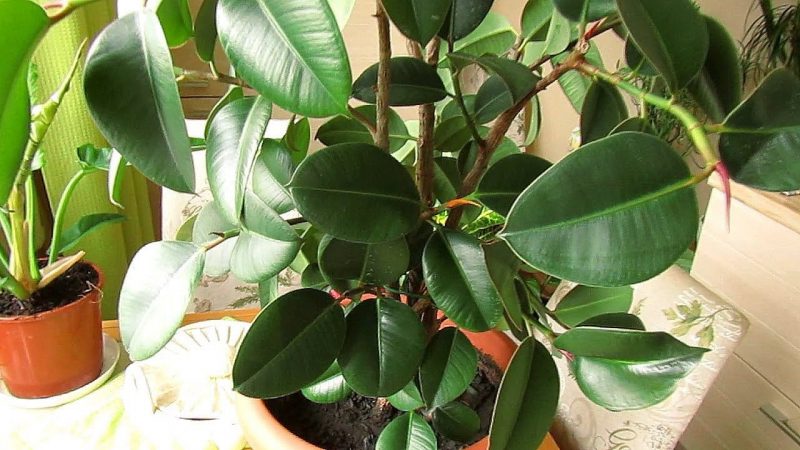
In winter, the room should be cool, but it must be ensured that the temperature does not fall below +15.
Without exception, all ficuses are very fond of a bright place, but at the same time they can not stand the direct sun, which burns the leaves of the plant. It is advisable in summer, when the sun is especially active, to shade a flower, if it stands on the window. It should be noted that ficuses do not tolerate drafts, inevitably put up with partial shade.
Ficus elastic love moisture and especially spraying with warm water. It is advisable to spray the flower with boiled water. In the summer, sprayed every day, with the advent of colds, spraying is stopped. Wipe the leaves with a wet rag every day all year round.
Soil composition requirements
Ficus is very fond of fertile, loose soil, which passes air and water well. Uses a regular flower substrate having an alkaline reaction.
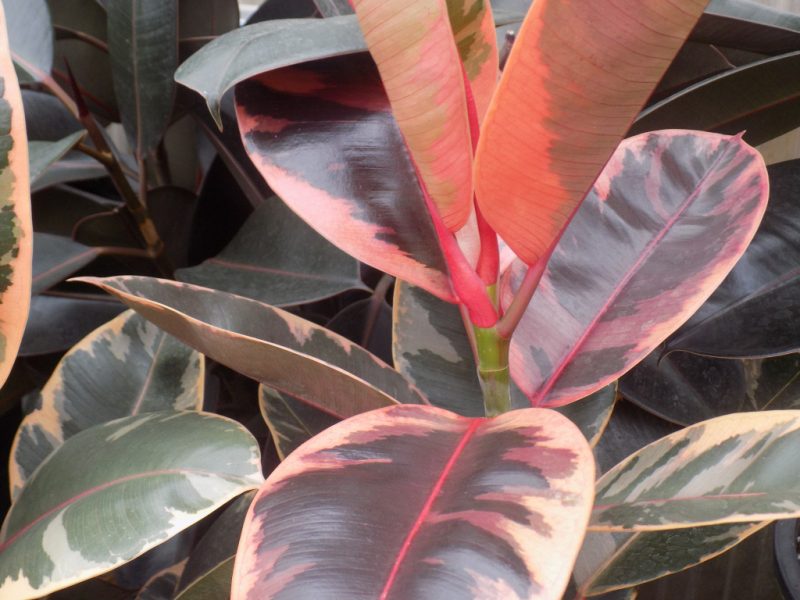
You can also prepare the soil mixture yourself by mixing in equal proportions:
- sheet earth;
- turf;
- river sand;
- peat.
Watering and feeding
Ficuses belong to drought-resistant houseplants, therefore they are watered very moderately, waiting until the soil in the flowerpot dries 3-4 cm. Adult specimens love when the soil between the irrigation has time to dry out by 10-12 cm
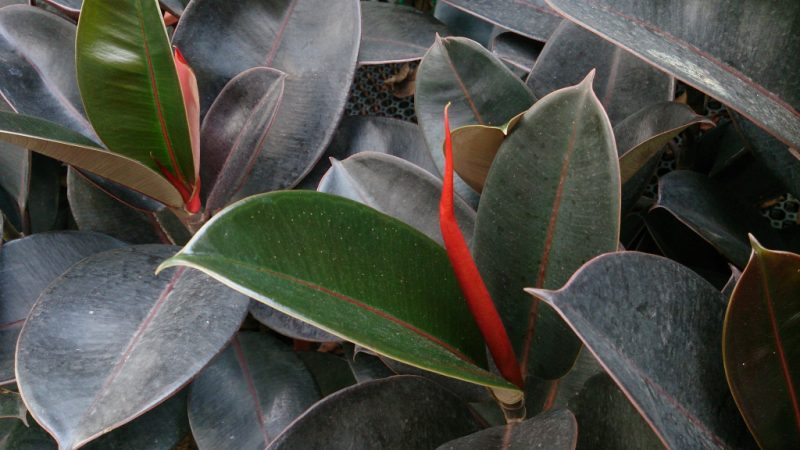
Be sure to drain the water from the pan after each watering so that it does not stagnate. Stagnation of moisture can trigger the onset of root rot, which often affects the plant.
During the growth period, starting from spring, ficus is fertilized 3 times a month with mineral compounds containing a lot of nitrogen. Nitrogen stimulates the plant to build green mass, and ficuses after such top dressing look very strong and lush.
Cropping and cutting crown
Each spring, ficuses should be pruned and crown formation carried out. Proper pruning will help make the bush more decorative, as well as prevent stretching of the stems. When pruning, the flower is shortened by 4-6 leaves down.
Plant transplant
When the ficus gets home from the store, you definitely need the first transplant after purchase. After a month of quarantine, the plant is transplanted into fresh soil in a more spacious container.
Young specimens are transplanted every spring as the roots develop in larger flowerpots. Adult ficus needs a transplant only every three to four years.
The transplant is carried out as follows:
- Choose a flowerpot, which is several centimeters larger in diameter of the previous container.
- There is good drainage at the bottom.
- The plant, along with a lump of earth, is transferred to a new pot.
- All voids are filled with new soil.
- The earth around the roots is compacted and the flower is watered abundantly.
Propagation of ficus elastic
Most often, amateur gardeners propagate ficus vegetatively - by cuttings or aerial layering. Cuttings are the fastest way to propagate ficus in a short time.
The procedure is carried out in the spring as follows:
- Make cuttings with an oblique cut about 15 cm long.
- The sheet above the cut is cut to 1/3.
- Milky juice from the slice needs to be washed off.
- The cuttings are dried for 2-3 hours, and then the section is treated with a growth stimulator.
- Cuttings are buried in a mixture of peat and river sand to a second node.
- Capacities need to be tightened with a film to create a greenhouse effect.
- When the first new leaves appear, young plants are planted in separate flowerpots.
Pests and diseases - how to treat?
Most often, ficuses begin to hurt when they are attacked by pests. Ficuses love to feast on scale insects and spider mites.
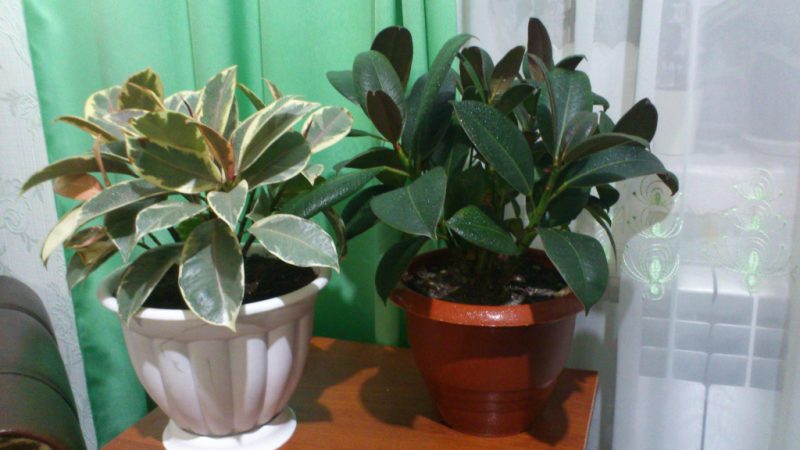
The main pest is a scale insect. This insect feeds on the juice of the leaves and covers them with a sticky substance. If you do not fight with the scale shield, then the ficus will inevitably die.
The first thing to do to remove the scab from the bush is to wash it under a warm shower with laundry soap. But we must try so that the soap does not get to the roots. For this, the pot around the trunk is wrapped with foil.
Then the flower should dry. When the leaves become completely dry, they are treated with tobacco ash. The remaining insects will die from tobacco and will not start again.
Very important prevention of the appearance of insect pests. For preventive purposes, the plant should be washed regularly with laundry soap.

Mostly ficuses are ill due to improper care. Most likely, plant irrigation is to blame for plant diseases. It is enough to reduce watering, and the ficus will come to life.
If the flower suffered due to improper transplantation, then it must be shed with a Zircon solution. For 1 liter of water, 4 drops of the drug are taken. The soil must be kept moist.
Maybe the ficus suffers from rotting roots. The main sign of root rot is leaf fall. There is no cure in this case - the flower will have to be thrown away.
What problems can a flower grower face?
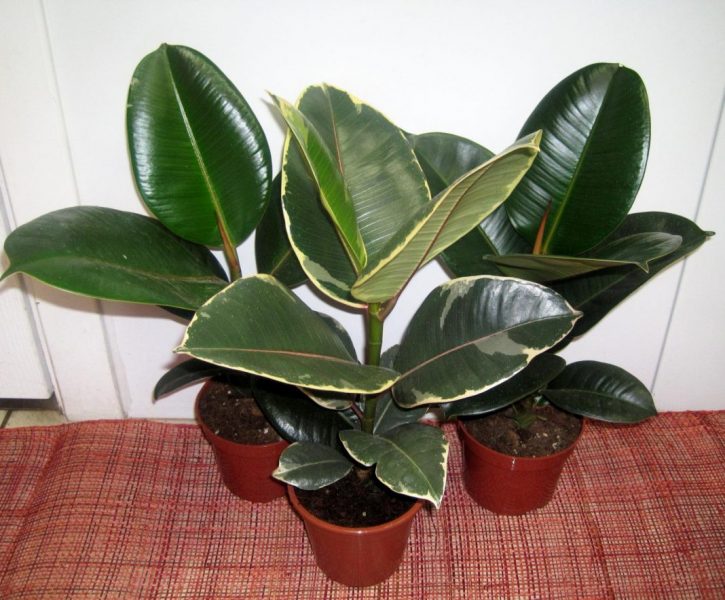
Although ficuses do not belong to demanding plants, some problems may arise during their cultivation:
- The flower grower may notice that the stem has darkened on the bush. Maybe the reason is the stagnation of moisture in the pan. In this case, you need to transplant the bush as soon as possible.
- If the tips of the leaves began to dry, then perhaps the air in the room is too dry. It is enough to put a container of water near the flowerpot and start spraying the flower, and this problem will disappear. The flower grower may notice that reddish spots appeared on the leaves of the ficus. Most likely, these are sunburn. The pot needs to be rearranged away from sunlight.
Ficuses are simple in maintenance and not demanding in care, although they come from exotic tropics. It is enough to create suitable conditions for this flower, and it will become the main decoration of the interior of your home. If you follow the simple rules, the plant will delight with lush foliage.












